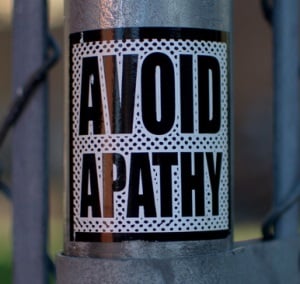When asked about safety, almost every company will say, “Yeah, for sure, we’re safe.” But anyone who’s been around actual equipment operations in the field knows that’s not always the reality.
Being safe takes time—even if it’s just a little bit of time. Personnel who operate equipment want to start it up and get on with work, so they can finish sooner. Management thinks of time as money, and so many of them don’t have a problem with that thinking.
 Management knows that safety minimizes the risk of workplace injury costs, and it knows that certain equipment safety measures are required to avoid fines for legal non-compliance and provide liability protection. So when they stop to think about it, they’ll realize that accepting inadequate safety measures is a shortsighted business strategy.
Management knows that safety minimizes the risk of workplace injury costs, and it knows that certain equipment safety measures are required to avoid fines for legal non-compliance and provide liability protection. So when they stop to think about it, they’ll realize that accepting inadequate safety measures is a shortsighted business strategy.
But they can easily forget about this insight under the stress of short-term bottom-line and operational pressures. When faced with completing a job by a fast-approaching deadline or paying a penalty, getting the job done fast can become more important than getting the done job safely.
That’s partly due the nature of a safety program—it can be almost “invisible” to management if it’s working as it should. When accidents aren’t happening, it’s easy to take safety for granted. A safety program may have just saved your company a large amount of money, but no one will even be aware of it—because no accident happened!
If you’re in that situation, congratulations—it means your safety program is on the right track. But you still need to constantly champion it’s importance and look for ways to continually make the workplace safer. Complacency is the enemy.
On the other hand, if you don’t have an adequate safety program in place and safety-related costs are a problem, you might very well be facing pressure to fix the problem. But that’s not an easy thing to do. Just because management is starting to grasp the financial consequences of poor safety, it doesn’t mean the people who operate the equipment will share in that appreciation.
Changing the Reality
You probably realized long ago that many personnel have the common thought that “accidents happen to other people—not to me.” And let’s face it; some employees simply don’t want to make the effort. Others have bad habits that aren’t safe. In some cases, personnel may consciously operate equipment in an unsafe manner because they think it’s worth the risk.
How do you address these reasons employees don’t work safely?
It starts with getting management to genuinely support your efforts. If management doesn’t actively and visibly support safety, employees won’t either.
You must also become a cheerleader—recognizing and rewarding employees for their safe practices, while constantly working to raise awareness about the importance of safety through internal communication and safety programs.
And to some extent, safety leaders in the company must become the “high school principal.” They must call out poor safety that’s going on in the company.
You can also use resources that encourage safety, such as The Checker equipment inspection checklists, which are easy to use but have all the detail necessary to ensure equipment is safe before being used. If personnel are required to complete The Checker before every use of equipment, you can get all the safety benefits of a strong inspection program, including lower costs related to on-the-job accidents.
Conclusion
The reality in many companies is that safety isn’t given the attention it should be. This is largely due to:
- A general unawareness of just how important safety is in business terms.
- Management’s tendency to put safety too low on the priority list.
- Insufficient safety resources provided to employees.
- Employee apathy.
Much of your success in creating an effective safety program will be tied to how well you address those causes of poor safety.
Image courtesy of break.things, Creative Commons.











